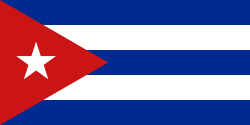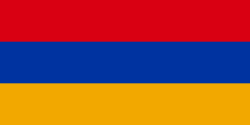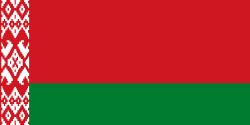Benur Pašajan
| Benur Pašajan | |
|---|---|
| Osobní informace | |
| Rodné jméno | Բենուր Փաշայան |
| Datum narození | 13. února 1959 |
| Místo narození | Azavreti, Gruzie |
| Datum úmrtí | 13. prosince 2019 (ve věku 60 let) |
| Stát | Sovětský svaz Arménie |
| Sportovní informace | |
| Klub | Dinamo Jerevan (vrch.) |
| Trenéři | Albert Mnacakanjan (osob.) Arutjun Chačatrjan (vrch.) |
| Kategorie | lehká váha |
| Zápasnický styl | zápas řecko-římský |
| Účast na LOH | bez účasti |
| Údaje v infoboxu aktuální k prosinci 2018 | |
| Přehled medailí | ||
|---|---|---|
| Mistrovství světa v zápasu řecko-římském | ||
| zlato | MS 1982 | muší váha |
| zlato | MS 1983 | muší váha |
| Mistrovství Evropy v zápasu řecko-římském | ||
| zlato | ME 1981 | muší váha |
| zlato | ME 1982 | muší váha |
Benur Pašajan (13. února 1959, Azavreti, Gruzie – 13. prosince 2019, Jerevan, Arménie)[1][2] byl sovětský a arménský zápasník – klasik.
Sportovní kariéra
Narodil se a vyrůstal v gruzínském Azavreti v arménské rodině. V 15 letech odešel studovat na internátní školu do arménském Jerevanu. V Jerevanu se specializoval na zápas řecko-římský pod vedením Alberta Mnacakanjana. V sovětské mužské reprezentaci se prosazoval od roku 1981 ve váze do 52 kg. V roce 1984 přišel o účast na olympijských hrách v Los Angels kvůli bojkotu a slabou náplastí mu bylo vítězství na tzv. truc olympiádě v létě téhož roku. Sportovní kariéru ukončil v roce 1985. Věnoval se trenérské práci.[3]
Výsledky
| Turnaj | 1977 | 1978 | 1979 | 1980 | 1981 | 1982 | 1983 | 1984 |
|---|---|---|---|---|---|---|---|---|
| 18 | 19 | 20 | 21 | 22 | 23 | 24 | 25 | |
| -48 | -52 | |||||||
| Olympijské hry | — | — | ||||||
| Mistrovství světa | — | — | — | — | 1. | 1. | ||
| Mistrovství Evropy | — | — | — | — | 1. | 1. | — | — |
| Univerziáda | — | 1. | ||||||
| MS juniorů | 1. | 1. | ||||||
Odkazy
Reference
- ↑ https://rusarminfo.ru/2019/12/13/v-erevane-skonchalsya-dvukratnyj-chempion-mira-po-borbe-benur-pashayan/
- ↑ https://sport.news.am/eng/news/106370/legendary-armenian-wrestler-benur-pashayan-dies.html
- ↑ Archivovaná kopie. sport.news.am [online]. [cit. 2018-12-07]. Dostupné v archivu pořízeném z originálu dne 2018-12-07.
Externí odkazy
Média použitá na této stránce
Flag of the Socialist Federal Republic of Yugoslavia (1946-1992).
The design (blazon) is defined in Article 4 of the Constitution for the Republic of Yugoslavia (1946). [1]
Flag of Iran. The tricolor flag was introduced in 1906, but after the Islamic Revolution of 1979 the Arabic words 'Allahu akbar' ('God is great'), written in the Kufic script of the Qur'an and repeated 22 times, were added to the red and green strips where they border the white central strip and in the middle is the emblem of Iran (which is a stylized Persian alphabet of the Arabic word Allah ("God")).
The official ISIRI standard (translation at FotW) gives two slightly different methods of construction for the flag: a compass-and-straightedge construction used for File:Flag of Iran (official).svg, and a "simplified" construction sheet with rational numbers used for this file.
Georgian flag in Pantone MS.
Finská vlajka






















